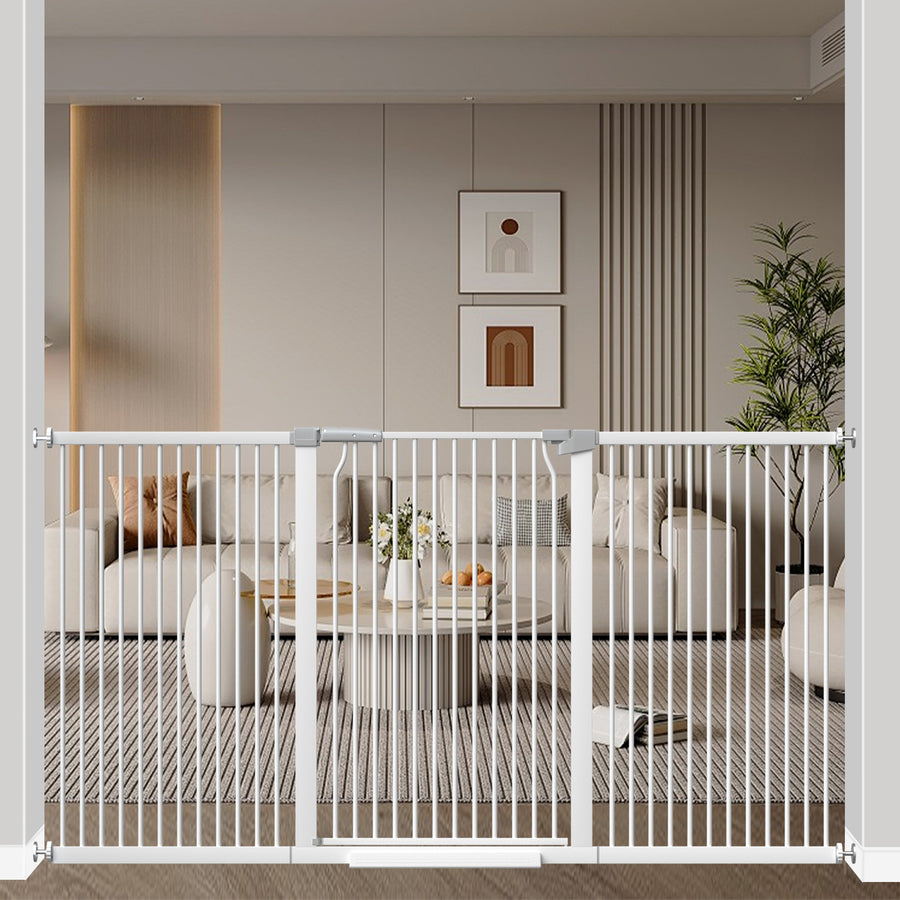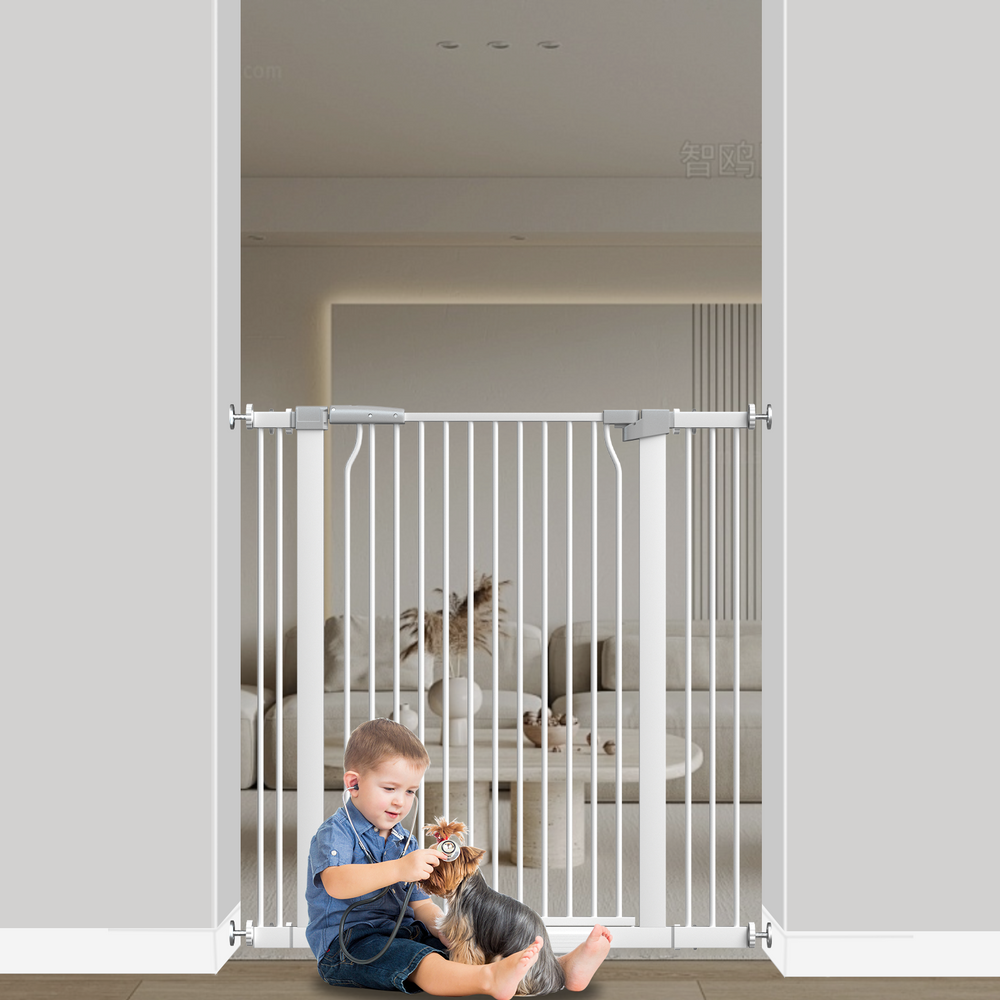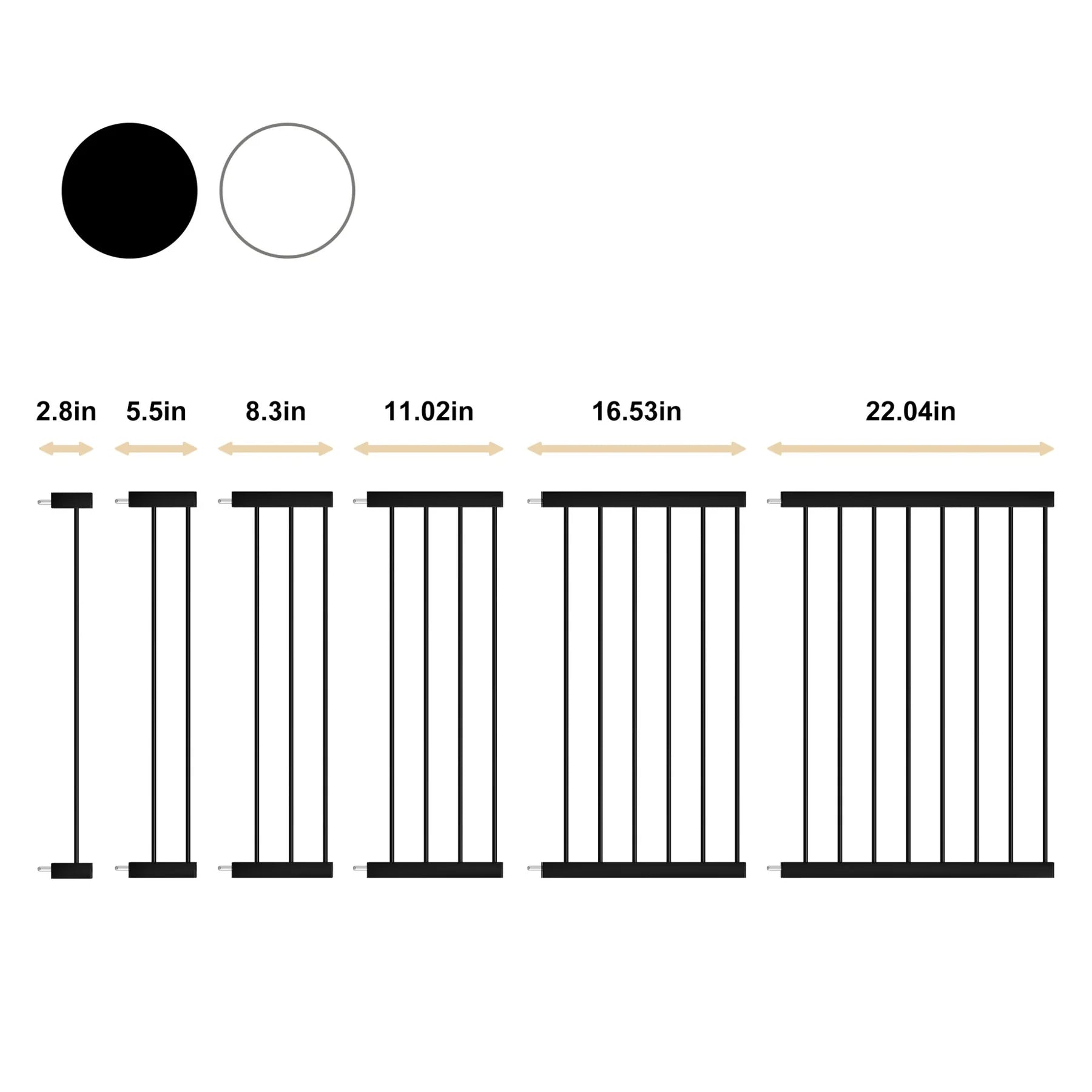Understanding the Safe Room Temperature for Baby's Sleep: Essential Guidelines for Parents
Ideal Temperature Range For Baby's Sleep
It's super important to get the temperature just right for your baby's sleep. Too hot or too cold, and they might not sleep well, which can affect their growth. Plus, overheating can be dangerous. So, what's the magic number? Let's break it down.
Recommended Temperature in Fahrenheit
The ideal temperature range for a baby's room is generally between 68 and 72 degrees Fahrenheit. Think of it like this: if you're comfortable in a light sweater, the temperature is probably good for your baby too. It's not an exact science, but it's a good starting point. You can always adjust a little based on your baby's cues.
Recommended Temperature in Celsius
Okay, for those of us who think in Celsius, the sweet spot is around 20 to 22 degrees Celsius. It's the same principle as with Fahrenheit – a comfortable temperature for a lightly dressed adult is usually perfect for your little one. Remember, it's about creating a safe and cozy environment. If you are looking for safe sleep for babies, there are many resources available.
Impact of Temperature on Sleep Quality
Temperature really does affect how well your baby sleeps. If it's too warm, they might get restless and uncomfortable, increasing the risk of overheating. If it's too cold, they'll wake up because they're chilly. Here's why getting it right matters:
- Better sleep: A comfortable temperature helps your baby sleep more soundly.
- Reduced risk: Maintaining the right temperature can lower the risk of SIDS.
- Healthy development: Good sleep is crucial for growth and development.
Keeping the room at the right temperature is one of the easiest things you can do to help your baby sleep better. It's not just about comfort; it's about safety and health. So, take a few minutes to check the thermostat and make sure everything is just right. You can also find a room thermometer to help you keep track of the temperature.
Importance of Maintaining Safe Room Temperature
It's easy to overlook the room temperature when you're setting up the nursery, but it's actually a really big deal. Keeping the temperature just right can seriously impact your baby's sleep, health, and overall well-being. It's not just about comfort; it's about safety too.
Effects on Baby's Growth and Development
Think of sleep as fuel for your baby's growth. When the room is too hot or too cold, your baby might not sleep as well. This can mess with their development. A comfortable temperature helps them get the rest they need to grow and develop properly. It's like setting the stage for healthy development right from the start.
Risk of Overheating and SIDS
Babies can't regulate their body temperature like adults can. Overheating is a real concern and has been linked to an increased risk of Sudden Infant Death Syndrome (SIDS). Keeping the room at the recommended temperature helps minimize this risk. It's a simple step that can make a big difference. It's important to know how to reduce the risk of SIDS.
Benefits of a Comfortable Sleep Environment
Beyond the safety aspects, a comfortable sleep environment just makes for a happier baby. When the temperature is right, they're more likely to fall asleep easily, stay asleep longer, and wake up feeling refreshed. This means fewer fussy moments and more peaceful nights for everyone. A well-rested baby is often a happier baby, and that's a win for the whole family.
Maintaining a safe room temperature is more than just a comfort issue; it's a key factor in your baby's health and development. It helps ensure they get the sleep they need, reduces the risk of overheating, and contributes to a more peaceful and happy environment for both baby and parents.
Signs Your Baby Is Too Hot or Too Cold
It's super important to keep an eye on your baby, even if you've got the thermostat set just right. Babies can't regulate their body temperature as well as adults, so they rely on us to make sure they're comfortable. Knowing the signs of overheating or being too cold can help you take action quickly.
Physical Signs of Overheating
One of the first things you might notice is flushed cheeks. Here are some other signs to watch for:
- Sweating
- Rapid breathing
- A rash fever
- Damp hair
If you notice these signs, it's time to cool your baby down. Remove a layer of clothing, move them to a cooler room, or give them a lukewarm bath. Just make sure the water isn't too cold!
Indicators of Being Too Cold
On the flip side, you also want to make sure your baby isn't too cold. It's normal for their hands and feet to feel a little cool, but their chest and back should be warm. Here's what to look for:
- Skin that feels cool to the touch (especially on their chest)
- Shivering (though this isn't always obvious in newborns)
- Lethargy or decreased activity
What to Do If You Notice These Signs
If you think your baby is too cold, add a layer of clothing or a blanket. Check their temperature with a baby thermometer to make sure they're in a safe range (typically between 97.5 and 99.5 degrees Fahrenheit). If their temperature is below that, or if you're concerned, call your doctor. If you are worried that your baby seems hot or feverish or is becoming overheated even when the room’s temperature is cool and comfy, contact your baby’s healthcare provider right away for expert advice. You could also use a room thermometer for your baby's room.
It's always better to err on the side of caution when it comes to your baby's temperature. If you're not sure, it's best to consult with your pediatrician. They can give you personalized advice based on your baby's specific needs.
Tips for Achieving the Right Room Temperature
Using a Room Thermometer
Okay, so you want to get the temperature just right? First things first, ditch the guesswork! Get yourself a reliable room thermometer. I mean, seriously, how else are you going to know if you're even close to that ideal 68-72°F (20-22°C) range? Place it near the crib, but out of baby's reach, of course. Digital ones are great because they give you a precise reading, but even a basic one is better than nothing. Check it regularly, especially before bedtime and during naps. It's a small investment that can make a big difference in your baby's sleep.
Adjusting Bedding and Clothing
Layering is your friend! Think of it like dressing yourself – you wouldn't wear a parka indoors, right? Same goes for your baby. Start with a lightweight onesie, and then add a sleep sack or swaddle, depending on the season and your baby's age. If the room feels a bit chilly, you might add a thin blanket, but always make sure it's tucked in securely and doesn't pose a suffocation risk. And if your baby seems too warm, remove a layer. It's all about finding that sweet spot where they're comfortable but not overheating. Remember, it's better to err on the side of caution and keep the room a little cooler rather than too warm, as overheating is linked to SIDS risk.
Ventilation and Airflow Considerations
Don't underestimate the power of fresh air! Stuffy rooms are no fun for anyone, especially babies. Good ventilation helps regulate the temperature and keeps the air clean. If the weather allows, crack a window open for a little while each day to let some fresh air in. Just make sure the crib isn't directly in the path of a draft. A fan can also help circulate the air, but point it away from the baby to avoid chilling them. Proper airflow is key to maintaining a comfortable and safe sleep environment.
It's easy to forget about ventilation, especially during colder months when you're trying to keep the heat in. But stale air can actually make the room feel warmer than it is, leading to overheating. So, even a few minutes of fresh air can make a big difference.
Creating a Safe Sleep Environment
Room Sharing Recommendations
Room sharing is highly encouraged, especially during the first six months, and ideally up to the first year. The American Academy of Pediatrics recommends room sharing because it can significantly lower the risk of SIDS. It also makes it easier to keep an eye on your baby, notice any changes in their breathing, or if they seem too hot or cold.
- Having your baby close by can ease anxiety.
- It simplifies nighttime feedings.
- You're more likely to notice if something is wrong.
Since bed-sharing isn't advised, consider using a bassinet or co-sleeper next to your bed. If space allows, you could even bring the crib into your room.
Choosing the Right Sleep Surface
The sleep surface is super important. Always place your baby on a firm, flat surface. A crib, bassinet, or play yard that meets safety standards is ideal. Make sure the mattress fits snugly, with no gaps around the edges where a baby could get trapped. Avoid using soft bedding, such as pillows, blankets, or bumper pads, as these can increase the risk of suffocation. The crib should be pretty bare – just a fitted sheet is all you need. Think "ABC" - Alone, Back, Crib.
Maintaining a Calm Atmosphere
Creating a calm and relaxing atmosphere can really help your baby sleep better and safer.
- Keep the room dark or dimly lit.
- Use a white noise machine to block out distracting sounds.
- Establish a consistent bedtime routine to signal that it's time to sleep. This could include a warm bath, a gentle massage, or reading a story.
A calm environment helps regulate your baby's body temperature and reduces the likelihood of overstimulation, which can disrupt sleep. A predictable routine also helps them feel secure and safe, which is essential for good sleep.
Additional Factors Influencing Baby's Comfort

Humidity Levels in the Room
Ever notice how dry air can make your skin itchy and your throat scratchy? Babies feel that too! Ideal humidity helps keep their nasal passages clear and comfortable. Too dry, and they might get congested. Too humid, and you're creating a breeding ground for mold. Aim for a humidity level between 30-50%. A hygrometer can help you keep track. If it's too dry, a humidifier is your friend. Just remember to clean it regularly to prevent bacteria growth.
Noise Control Techniques
While some babies can sleep through anything, others are light sleepers. Loud noises can definitely disrupt their sleep. Here are some things you can try:
- Use white noise: A fan, a white noise machine, or even a static radio station can help mask sudden noises.
- Soundproof the room: Thick curtains, rugs, and even acoustic panels can help absorb sound.
- Be mindful of your own noise levels: Try to avoid loud conversations or activities near the baby's room, especially during nap times and bedtime.
I remember when my little one was a newborn, the slightest creak would wake her up. We ended up putting rugs down and being super careful about closing doors gently. It made a huge difference!
Lighting Considerations
Lighting plays a big role in regulating a baby's sleep-wake cycle. Here's the lowdown:
- Keep it dark at night: Use blackout curtains or blinds to block out as much light as possible. A completely dark room signals to the baby's brain that it's time to sleep.
- Use a dim night light: If you need some light for nighttime feedings or diaper changes, use a dim, red-toned night light. Red light is less disruptive to sleep than blue or white light.
- Expose them to natural light during the day: Open the curtains and let the sunshine in during the day. This helps regulate their circadian rhythm. You can even use a baby check app to monitor your baby's symptoms.
Monitoring and Adjusting Temperature Regularly

Daily Temperature Checks
Okay, so you've got the room temp dialed in, but it's not a 'set it and forget it' kind of deal. Make it a habit to check the room temperature at least once a day, maybe even twice. Morning and night are good times. This helps you catch any sneaky fluctuations before they mess with your baby's sleep. Use a reliable room thermometer for accuracy.
Seasonal Adjustments
Seasons change, and so should your temperature strategy. What works in the spring might not cut it in the dead of summer or the middle of winter. Think about it:
- Summer: You might need to crank up the AC or use fans. Just don't point them directly at the baby.
- Winter: Heating can dry out the air, so consider a humidifier. And make sure the crib isn't right next to a radiator.
- Fall/Spring: These in-between seasons can be tricky with fluctuating day and night temperatures. Layering bedding is your friend here.
It's easy to forget about temperature changes as the seasons shift, but your baby's comfort depends on staying vigilant. A sudden heatwave or cold snap can throw everything off, so keep an eye on the forecast and adjust accordingly.
Using Technology for Monitoring
We live in the future, so let's use some gadgets! There are some pretty cool baby monitors out there with built-in temperature sensors. Some even send alerts to your phone if the room gets too hot or cold. It's like having a baby check app that never sleeps. Plus, some smart thermostats can be programmed to maintain a consistent temperature in the baby's room. It's worth the investment for peace of mind.
Wrapping It Up
In the end, keeping your baby's room at the right temperature is super important for their sleep and safety. Aim for that sweet spot between 68 and 72 degrees Fahrenheit. It might take some trial and error to find what works best for your little one, but it's worth it. A comfy room helps them sleep better, which means you can catch some Z's too. Remember, a well-rested baby is a happy baby, and that makes for a happier home overall.






Leave a comment